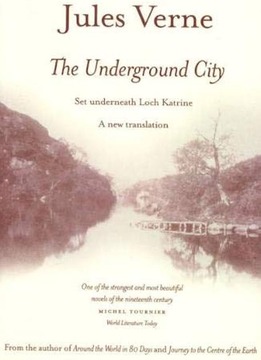In 1859 Jules Verne left France for the first time and visited Scotland. He looked over Edinburgh from Arthur’s Seat (his first ‘mountain’), visited Glasgow, and took the train to Loch Lomond and on, via coach, to the scenic Trossachs, which he was anxious to see. Along the way he learnt of local history and folklore. It’s from this five day trip that the inspiration for The Underground City (1877; tr: Sarah Crozier, 2005) comes, one of a few of Verne’s many novels to be set wholly or partially in Scotland.
Other translations have rendered the novel as Black Diamonds or, more famously, The Child of the Cavern. Its original French title ‘Les Indes noires’ nods to the importance of coal in Britain at the time. And it’s a coal mine and its workers that drive this curious, if somewhat dull, romantic adventure from Verne.
When it opens the mine at Aberfoyle has been closed for ten years but one family staying on discovers a new seam that in turn leads to the discovery of a large underground cave system, under Loch Katrine, stretching all the way to Irvine on the west coast, encouraging miners to pick up their picks and found New Aberfoyle, a subterranean city. But something or someone is set on sabotage, and here Verne treads the line between Scottish folklore and human engagement until all is revealed.
Along the way Nell( the ‘child of the cavern’), is discovered, becoming, having lived her life in the dark, a somewhat naive love interest (a new meaning to carbon dating!) Through her eyes, as she heads above the surface, Verne opens our eyes to the wonders of nature, both on land and astral. But there’s overall a sense that the adventure he wishes to portray is second-hand to his own eyes being opened to the beautiful landscapes experienced on his own adventure.
It’s obvious why it’s not as well known as Verne’s other works. The premise may be audacious but the actual adventure lacks spirit, the people aren’t interesting, and its plotting, even if well foreshadowed, falls a bit flat. The story just plods on, with digressions to recant tales no doubt told on Verne’s trip or to do for coal what Melville did for cetology. Definitely a miner work.
